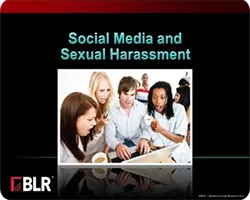The advent of social media has brought about a major revolution in the realms of marketing and communication, but it has also, unfortunately, added another avenue for people to be harassed. In the context of work, social media has started to blur the lines between people’s private and professional lives, which may have contributed to the rise in workplace sexual harassment cases and the consequent need for training and adjustments to sexual harassment policy to safeguard employees.
Why employers should care about social media sexual harassment and what they can do to address it
Employees are often unaware that their offensive online conduct may be considered workplace harassment. It is the duty of employers to correct this misconception in order to protect their employees and their own interests. Employers can face major financial losses should it come to light that they were aware of a sexual harassment issue involving their staff but did nothing to investigate or intervene – the EEOC reported that, in 2015 alone, they recovered $164.5 million for workers alleging harassment.
The following steps can be taken to assist in stopping (potential) harassers from hiding behind their screens:
• Expand upon the organization’s existing sexual harassment policy to include employee conduct on social media platforms and electronic communication systems;
• Train employees on what constitutes harassment, the consequences for being found guilty of such conduct, and the procedures for reporting being harassed. Bystander intervention training, according to the EEOC, has shown promise in sexual harassment prevention, as it encourages witnesses to come forward in cases where the victim of harassment might not feel safe to do so of their own accord;
• Cultivate a company culture where victims feel safe to report incidents and perpetrators are dealt with swiftly, appropriately, and proportionately. This necessitates buy-in from all levels of management as well as measures to keep individuals who are responsible for enforcing anti-harassment policy, accountable;
• The EEOC recommends that employers should be alert for any possibility of retaliation against an employee who reports harassment and should implement measures to curb secondary victimization by co-workers or management.
• Multiple harassment reporting measures should be made available and HR should endeavor to regularly test the reporting system in order to ensure that it is appropriately serving its purpose.
Further guidance on dealing with social media sexual harassment in the workplace
For many businesses, dealing with social media sexual harassment is uncharted territory. As such, we have selected a sexual harassment prevention training course in the Coggno training library to aid HR and management in including and integrating social media conduct into existing harassment policies:
Social Media and Sexual Harassment Course*
Duration: 24 Minutes
*30% OFF, valid thru Oct. 6th, 2017



















